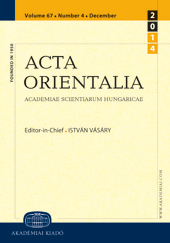The Syntax of Duration Phrases in Han Period Chinese
The Syntax of Duration Phrases in Han Period Chinese
Author(s): Barbara MeisterernstSubject(s): Language studies, Syntax
Published by: Akadémiai Kiadó
Keywords: syntax; Han period Chinese; duration phrase; complement; predicate; situation type;
Summary/Abstract: In this paper, the different syntactic and semantic constraints in the employment of phrases expressing duration in Han period Chinese will be analysed. Duration phrases are those grammatical features that indicate the time of reference in a text as a period (duration) of time, in a question substituted by “how long?”. They are syntactically and semantically distinguishable from temporal phrases, whose features indicate a particular point of time, in a question substituted by “when”. Both categories are subject to certain syntactic constraints and can be distinguished according to their syntactic position in the sentence. I will argue that: (1) duration phrases in preverbal position are analysable as circumstantial adverbials and in postverbal position they are - depending on their syntactic structure - analysable either as included in the VP or as predicates of a sentential subject; (2) semantically, they can be distinguished into those referring to situational duration and those referring to the duration of a resultant state; and (3) the distinction of the different duration phrases is due to the semantics - the situation type (Aktionsart) - of the verb employed.
Journal: Acta Orientalia Academiae Scientiarum Hungaricae
- Issue Year: 56/2003
- Issue No: 2-4
- Page Range: 117-136
- Page Count: 20
- Language: English
- Content File-PDF

